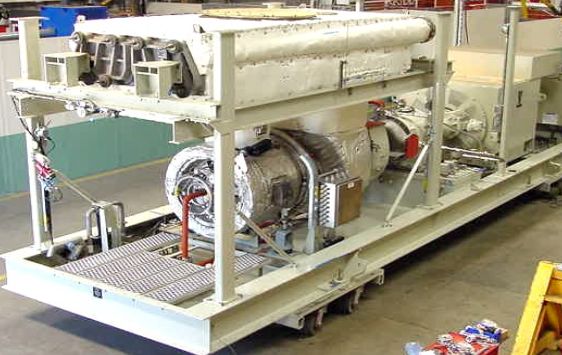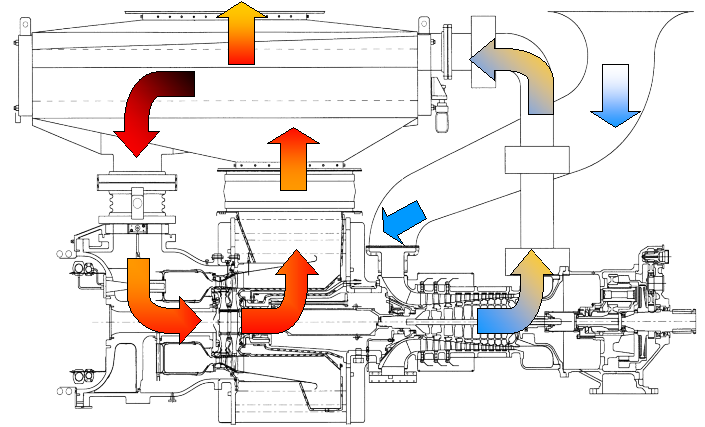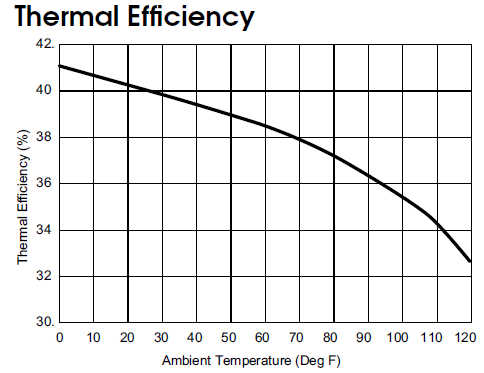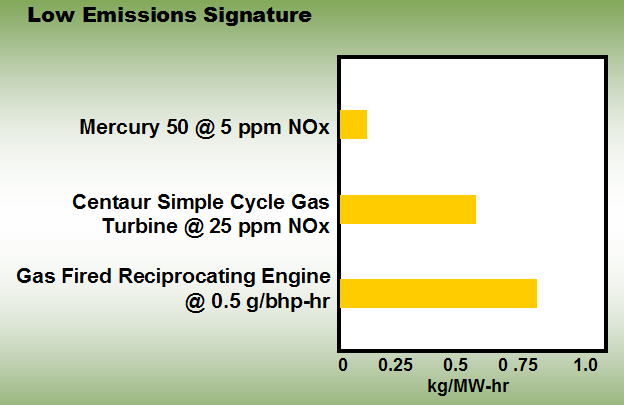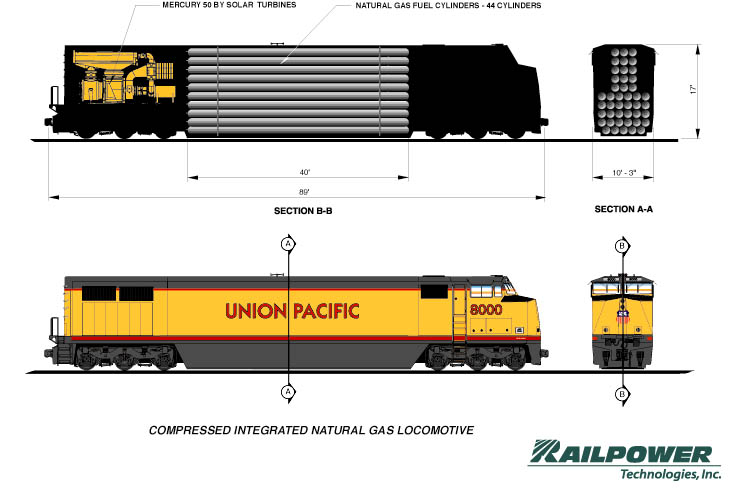|
|
Compressed Integrated Natural Gas Locomotive |
Natural gas gas turbine locomotiveOnce RailPower Technologies (R J Corman Railpower) once proposed the low emission gas turbine locomotive fueled by the natural gas. Compressed natural gasLiquefied gases occupy very small space but liquefying requires much energy. If the certain amount of space for fuels is allowed, compressed and integrated natural gases will be promising as a locomotive fuels. Diesel engines cannot exhibit the same performance as it is when light oil is used as its fuel. So that reciprocating internal combustion engines require large size and bulky. So that they are not suitable for locomotives. SafetyThere are some doubts about the safety of using gases as locomotive fuels. When the locomotive crashes, fuel tanks will be broken and gases will leak. But the main component of natural gas is methane and it is lighter than air. When it leaks it will distribute upper space and will not stay around the crash site. RailPower Technologies insisted on its safety level as same as that of liquid diesel fuels. Gas turbineThe problem is how to secure a gas tank space in a narrow locomotive space. Hauling a fuel tender is not favorable from an economical standpoint. To get the fuel space within the locomotive, RailPower Technologies focused on the compactness of a high speed generator directly driven by a gas turbine. A 5000 horse power gas turbine generator can be mounted on the corner of the locomotive. By removing a diesel generator, a wide open space can be allocated. RailPower Technologies also focused on Mercury 50 recuperated single shaft gas turbine developed by Solar Turbines. This engine was one result of the U.S. government Advanced Turbine Systems Program. The rated output is 4200 kW (lately tuned up to 4600kW), rotational speed is 14186 rpm.
The next schema illustrates the gas flow in the engine
The thermal efficiency changes according to the ambient temperature.
Natural gas fueled gas turbine emits less pollutants and next generation combustor reduces NOx in its exhaust. The next schema is the comparison of NOx level in the exhaust with other engines.
Fuel spaceThe next schema shows the inner structure of an most advanced diesel electric locomotive EURO 4000. The rated output of the engine is 4210 horse power, the engine (red) and the radiator (green) are mounted close together and occupy the wide space in the locomotive.
The next schema illustrates the arrangement of a turbine generator and gas cylinders allocated in the locomotive of same size. A large diesel generator is removed and replaced by a gas turbine generator and it takes small space. So that many gas cylinders can be allocated.。
Total amount of gases is equivalent to 21000 litter diesel fuel and the locomotive can continue operations for over 40 hours under the middle load. Operator's dreamRailPower Technologies insisted that this locomotive is an operator's
dream, not only it can use low cost compressed natural gases emitting
little amount of pollutants but also can achieve 10000 horse power, the
performance that cannot be achieved by a diesel locomotive. |
